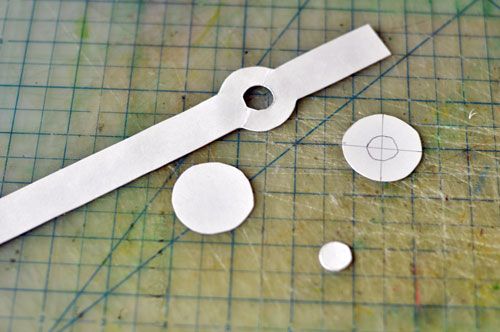
An arm is glued on the front of the card (not shown) to one side of the card's central fold but operating on the opposite side of the central fold. In this way, the arm makes use of the physical force applied by opening the card and closing it. The action of opening and closing the card will cause the arm to move back and forth one inch like a piston. The back and forth motion is transferred to another arm (above) on a pivot pin thus creating another movement, a much longer arc that sweeps nearly half the opened page. The first arm disappears through a slot to the back of the card. A second arm is attached to the original arm along with a paper pivoting pin. The mechanism is constructed on the back of the card. The tip of the pivoting swinging second arm is pushed through a slot cut in the shape of the arm's arc. Content is glued to the tip of the arcing arm, now showing through on the front of the card and traveling along arc of the slit. So, the original tip of the first arm shows on the front of the card, then the arm disappears behind the card where the transfer mechanism is located, and the tip of the second arm shows through the slot cut from the arc produced by the second arm.
On the back of the card, the button with an X cut into it forming four propellers. Two of the propellers are glued to the back of the card. The remaining two propellers are folded along a crease so that the propellers can fit through the hole cut into the pivoting and swinging arm to act as a stable swivel pin.
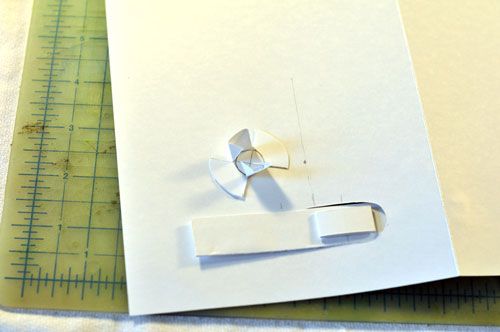
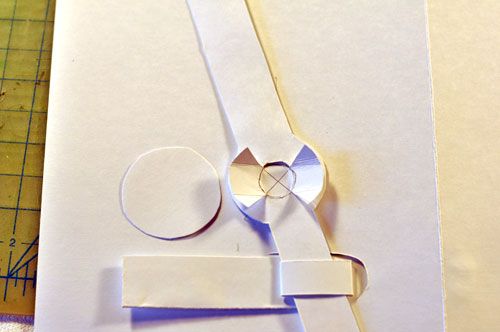
A finishing disc is provided to reinforce the two propellers that form a pin for the pivoting arm
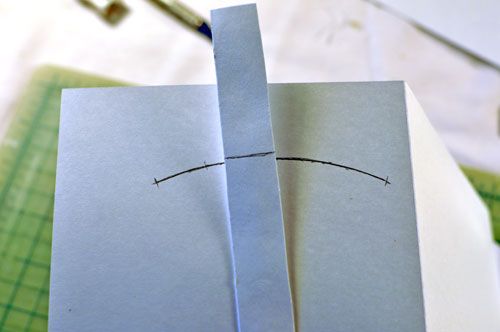
An arc is drawn on the back of the card determined by the swing of the arm.
A slot is cut in the shape of the arc.
The tip of the pivoting arm is pushed through the slot so now content can be glued to the tip that swings back and forth on the front of the card. Notice the ends of both arms, the mechanism is hidden in the back. In this case, the content glued to the swinging arm is the chameleon's tongue. Only half the tongue swings back and forth along the arc, the other half is drawn directly onto the background of the card, also along the arc so that it appears as if the tongue is extending toward the worm.
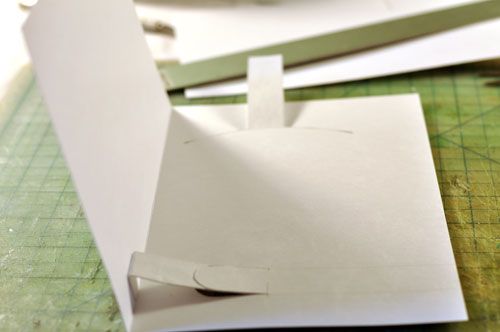
Leaves of various tone covering a sheet of card stock.
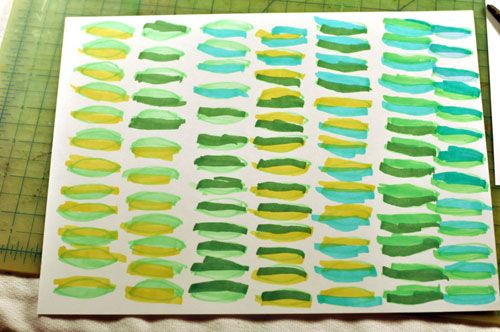
The leaves cut out and ready to be applied to some kind of scaffolding.
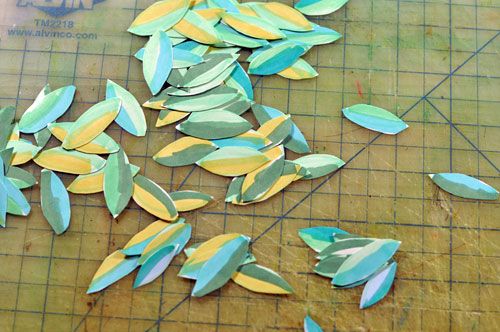
The chameleon is drawn, colored, and cut out, then pasted onto the background of the card. So it is distinguished slightly from leaves drawn directly onto the background and very slightly 3-dimensional, at least so much as the thickness of card stock. Some leaves are glued to the background too. Other leaves are drawn directly onto the background. So there is a very slight variation in background height that creates a little shadow and hints at dimension.
Then there is actual additional dimension. Another layer of branches and leaves is situated on an incomplete table. The original conceptualization of a table is another plane, an inner card situated on paper legs directly above the background card. So a card within a card that work parallel with each other, fixed by posts, one post along the central fold of the card and two more posts for each end. The post in the middle can service both sides of the table as an I bar.
A variation of this is a table with large holes cut into it so that the background shows through. Like cutting holes into a broad side of cereal box so that the contents can be seen through the cuts.
Yet another variation of the table is a flimsy net-like or lace-like construction that operates the same as a table on posts, one along the central fold, but weak legs and not for the full length -- a very weak flimsy table. With the same or similar pattern as the background then the flimsy paper mesh constructed as a table can suggest depth through layers.Layers that can be seen through.
There is only one additional layer 1/2 inch above the background layer, yet it appears as if the chameleon is tucked behind thick dense layers of branches.
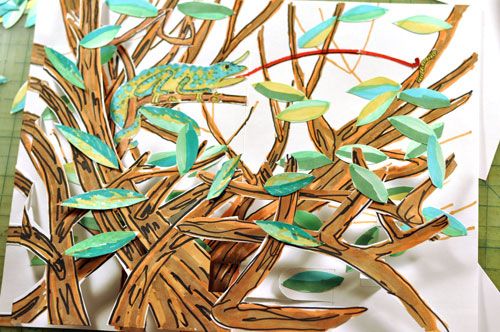
This idea of a flimsy table set atop flimsy legs, incomplete and randomly but properly positioned, is used again for the second page. This time looking down onto the forest floor.
No comments:
Post a Comment